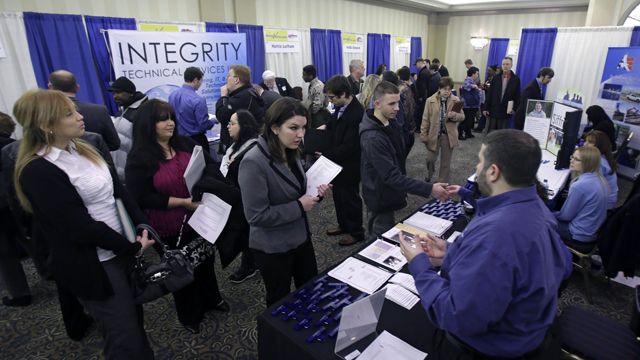
Have you noticed “the powers that be” employ an entirely different standard for measuring the health of America’s job market than they use for the stock market?
They’re currently telling us that, “The job market is improving.” What do they mean? Simply that the economy is generating an increase in the number of jobs available for workers. But when they say, “The stock market is improving,” they don’t mean that the number of stocks available to investors is on the rise. Instead, they’re measuring the price, the value of the stocks. And isn’t value what really counts in both cases? Quality over quantity.
Employment rose by 217,000 jobs in the month of May, according to the latest jobs report — and that brought us up to 8.7 million. That is how many new jobs the American economy has generated since the “Great Recession” officially ended in 2009 — and it also happens to be the number of jobs that were lost because of that recession. You can break out the champagne, for the American economy is back, baby — all of the lost jobs have been recovered!
You say you don’t feel “recovered”? Well, it’s true that the US population has kept growing since the crash, so about 15 million more working-age people have entered the job market, meaning America still has millions more people looking for work than it has jobs. And it’s true that long-term unemployment is a growing crisis, especially for middle-aged job seekers who’ve gone one, two or more years without even getting an interview, much less an offer — so they’ve dropped out of the market and are not counted as unemployed. Also, there are millions of young people who are squeezed out of this so-called recovery — the effective unemployment rate for 18- to 29-year-olds is above 15 percent, more than double the national rate of 6.3 percent.
But take heart, people, for economists are telling us that full employment may be right around the corner. Is that because Congress is finally going to pass a national jobs program to get America working again? Or could it be that corporate chieftains are going to bring home some of the trillions of dollars they’ve stashed in offshore tax havens to invest in new products and other job-creating initiatives here in the USA?
No, no — don’t be silly. Economists are upbeat because they’ve decided to redefine “full” employment by — hocus pocus! — simply declaring that having six percent of our people out of work is acceptable as the new normal. And you thought American ingenuity was dead.
Now, let’s move on to the value of those jobs that have economists doing a happy dance. As a worker, you don’t merely want to know that 217,000 new jobs are on the market; you want to know what they’re worth — do they pay living wages, do they come with benefits, are they just part-time and temporary, do they include union rights, what are the working conditions, etc.? In other words, are these jobs … or scams?
So, it’s interesting that the recent news of job market “improvement” doesn’t mention that of the 10 occupation categories projecting the greatest growth in the next eight years, only one pays a middle-class wage. Four pay barely above poverty level and five pay beneath it, including fast-food workers, retail sales staff, health aids and janitors. The job expected to have the highest number of openings is “personal care aide” — taking care of aging baby boomers in their houses or in nursing homes. The median salary of an aid is under $20,000. They enjoy no benefits and about 40 percent of them must rely on food stamps and Medicaid to make ends meet, plus many are in the “shadow economy,” vulnerable to being cheated on the already miserly wages.
To measure the job market by quantity — with no regard for quality — is to devalue workers themselves. Creating 217,000 new jobs is not a sign of economic health if each worker needs two or three of those jobs to patch together a barebones living — and millions more are left with no work at all.
The views expressed in this post are the author’s alone, and presented here to offer a variety of perspectives to our readers.


